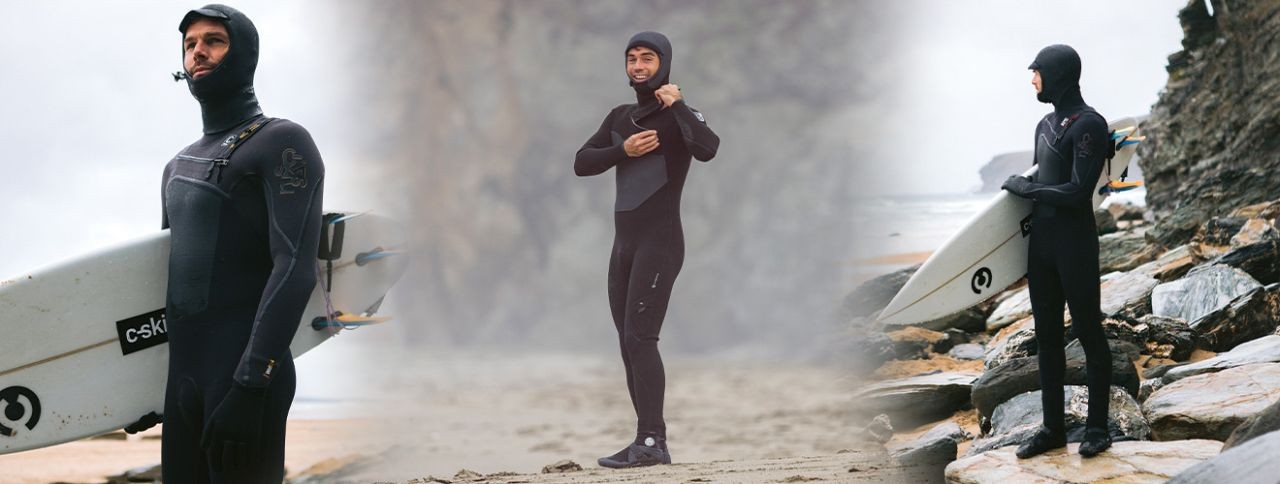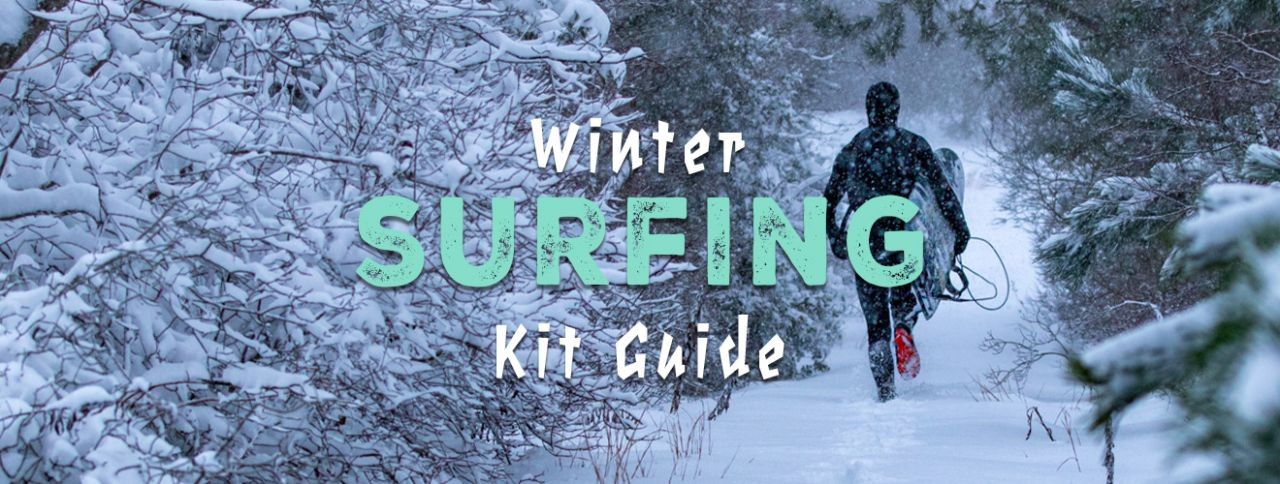Winter Surfing Kit Guide
During the winter months from January to March, the sea temperature in the UK can drop down to a chilly 7-10° (average) so you want to make sure you have some good kit to keep warm. But even then, some factors can make one day to the next differ massively.
The weather can have a huge impact on how warm you’ll be. For example, going surfing on a cold rainy, windy day as opposed to a mild sunny day with zero wind can limit your time in the water.
Conditions. Some days you may be just floating, waiting for the sets to roll in and on other days, you may be more active paddling around, catching more consistent waves, keeping you a lot warmer.
It’s also important to always do a warm-up and some stretches on the beach before entering the water, to get the blood flowing and heart rate up to minimize getting cold and also to prevent injuries.
You’re hardcore - It goes without saying, that some people just don’t feel the cold. If you’re acclimated to cold conditions you may last longer than someone who hasn’t spent a lot of their time in a cold climate.
Choosing a Wetsuit
It can be personal preference but as a rule of thumb when it comes to surfing during the winter months, a 5mm wetsuit will keep you warm for at least an hour, if not longer.
Winter wetsuits can come as 5:4mm, 5:3mm and sometimes 5:4:3mm. The larger number (5) is usually the thickness of the neoprene on the torso/body and the smaller number (3/4) is the thickness on your legs and arms which allows more flexibility making it a little easier when paddling and popping up. If you feel the cold, there are also 6:5mm wetsuits available. They come with different seals from glued blind stitch, taped internally and external liquid taped seals giving maximum protection.

Hood
A hood is vital as we lose heat from our heads when active.
Some suits come with an integrated hood and some without. The former will be the warmest with minimal flushing (water entering the suit after a wipeout) than that of one with a separate hood. But whatever your needs/preferences or budget both will keep you warmer than if you were to go in without one.

Gloves and Boots
To protect your extremities, it is highly recommended to get some warm gloves and boots to maximise your time in the water. Your feet will be in the water most of the time unless you are actually on your board surfing so it’s important to get a pair. Again, it’s personal preference, but a winter boot's most common thickness is 5mm. They can range from 3-8mm and are available in 2 options, split-toe or round-toe. Although the round-toe boot is generally warmer the split-toe boot, where your big toe is separated from the rest, provides more stability when on your board doing critical manoeuvres.

Gloves come in many different varieties also, ranging from 2mm to 7mm. They are also available as a 5 finger glove, a mitten or lobster claw (3 finger) where your thumb and index finger are free to roam and your remaining 3 fingers are together in one section.
The mitten will provide absolute warmth as your fingers are all touching, it regulates the heat. The lobster claw also offers a good degree of warmth but with added flexibility and practicality.

We hope this blog gives you a better understanding of surfing in the winter and more confidence when purchasing kit. As with all wetsuits, they can wear after time but you should be able to get a few seasons out of a wetsuit before it’s time to recycle and repeat.

Related Posts
By accepting you will be accessing a service provided by a third-party external to https://www.escape-watersports.co.uk/



